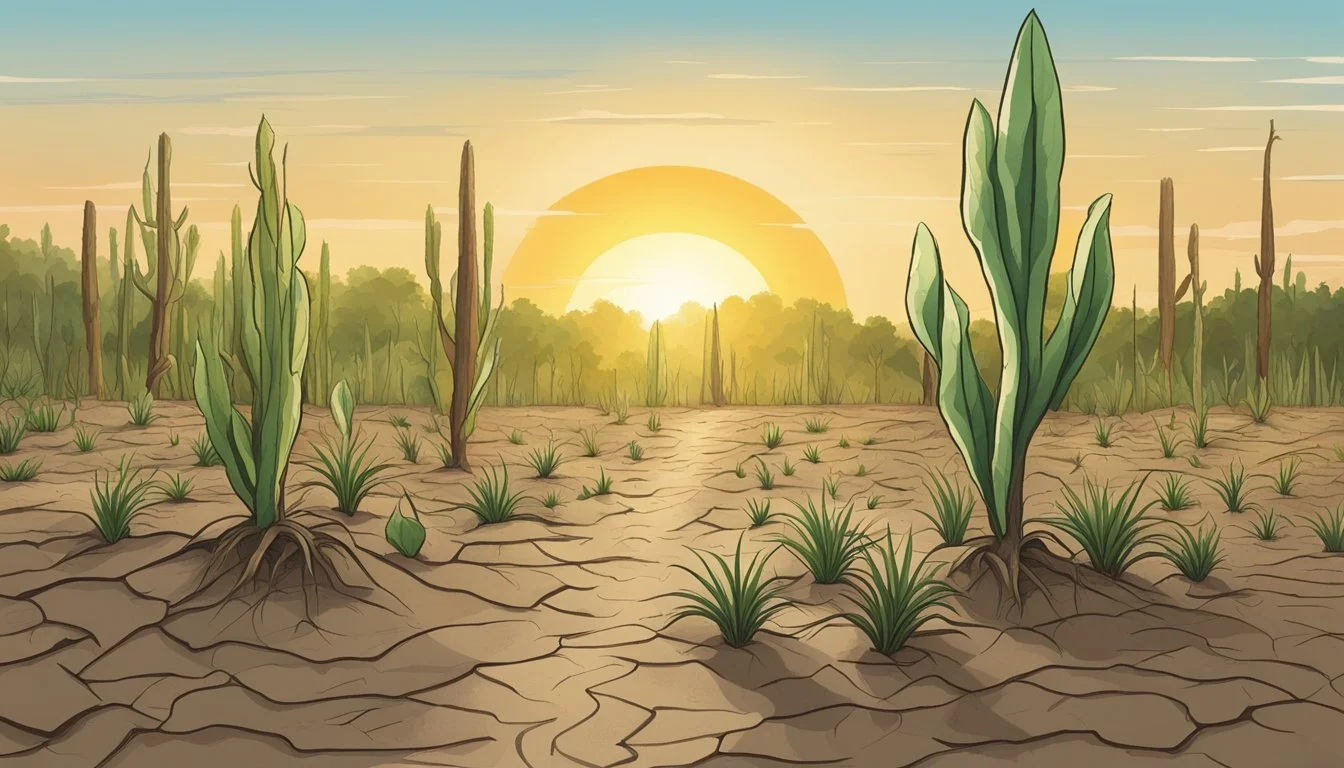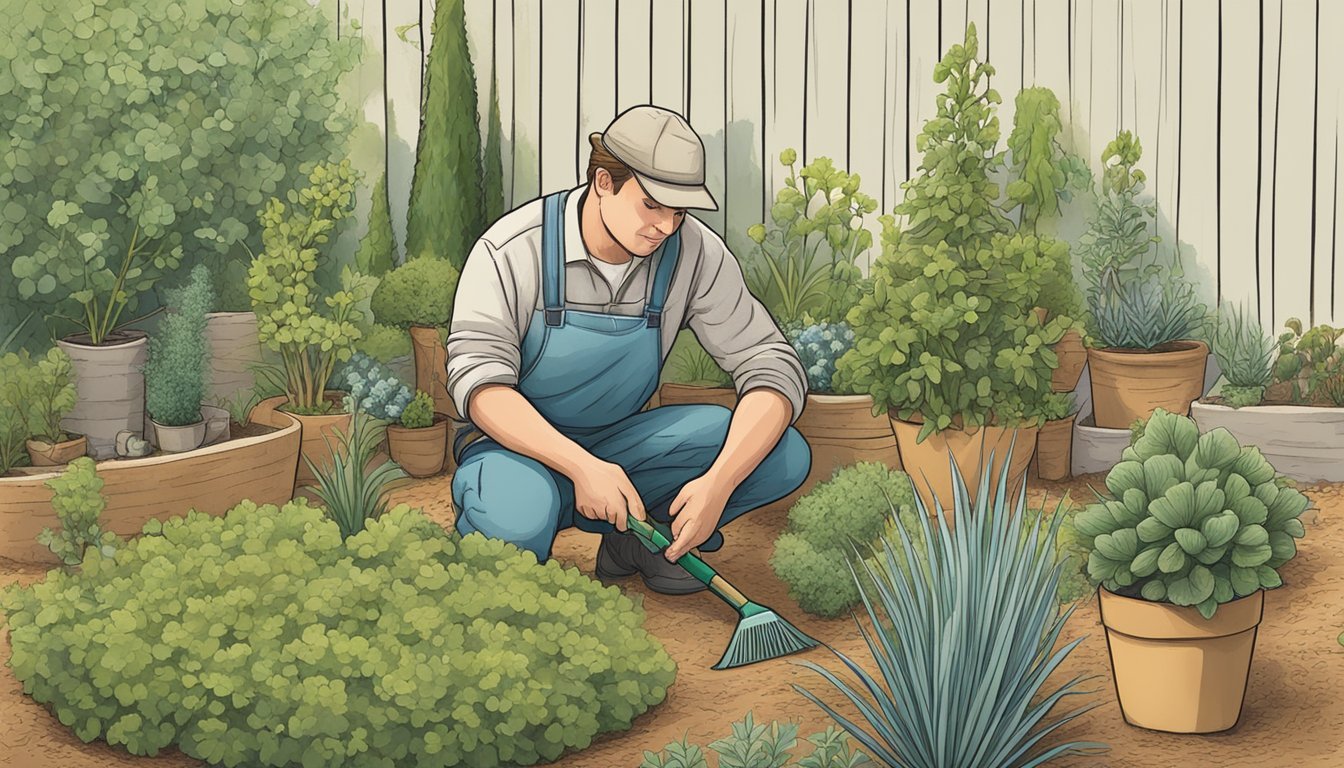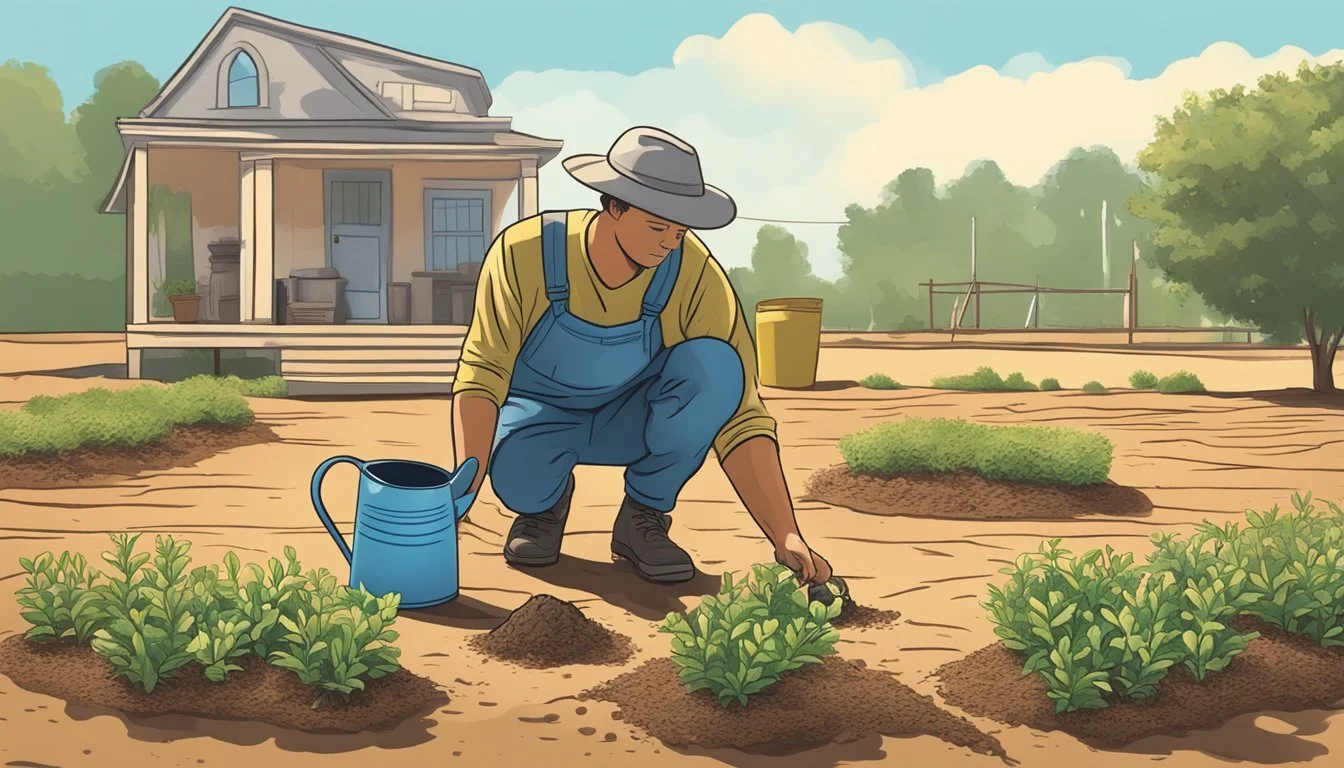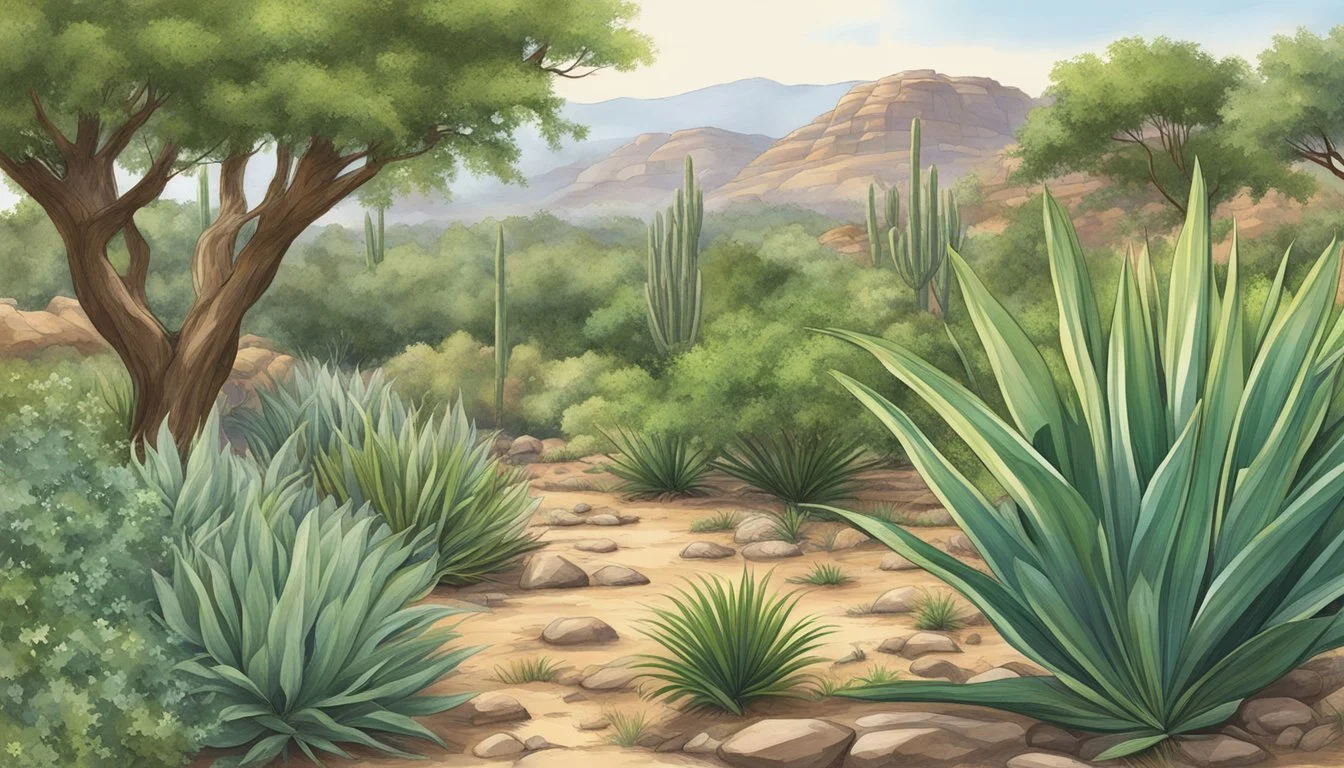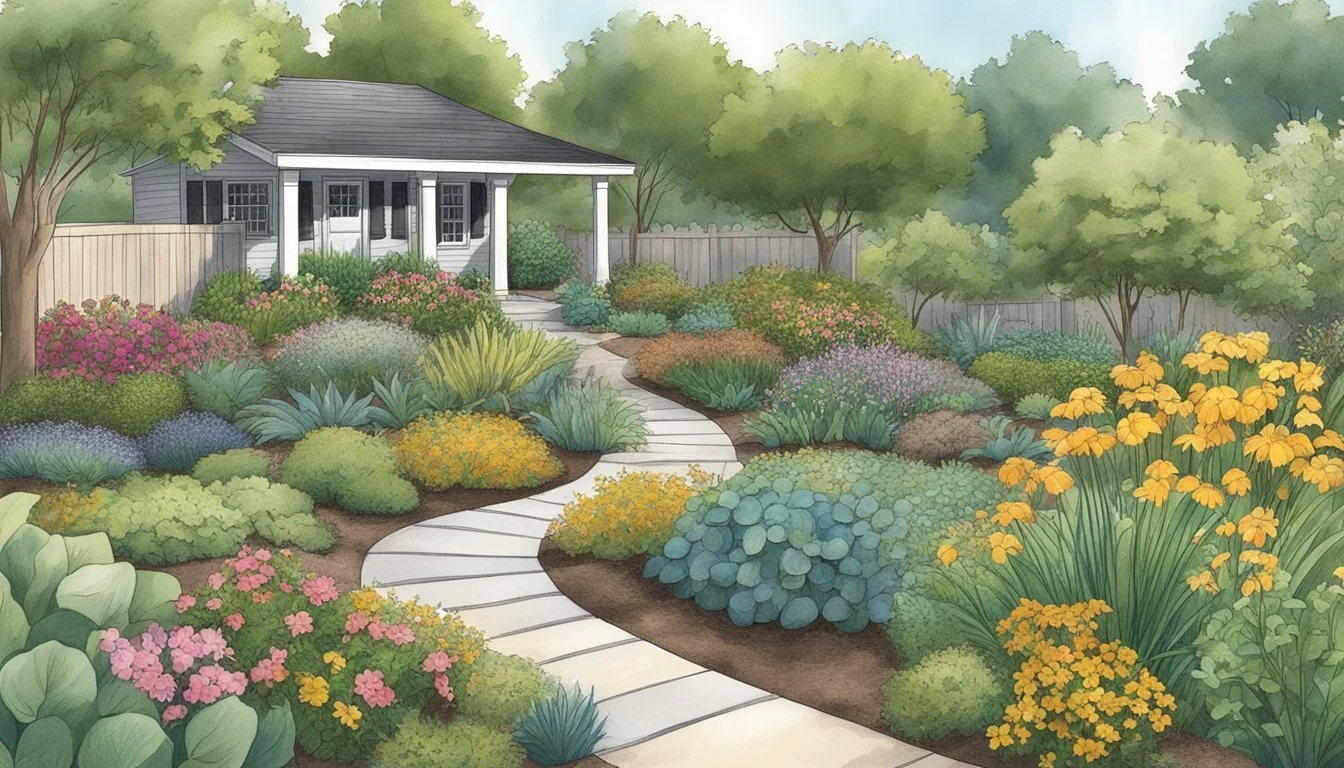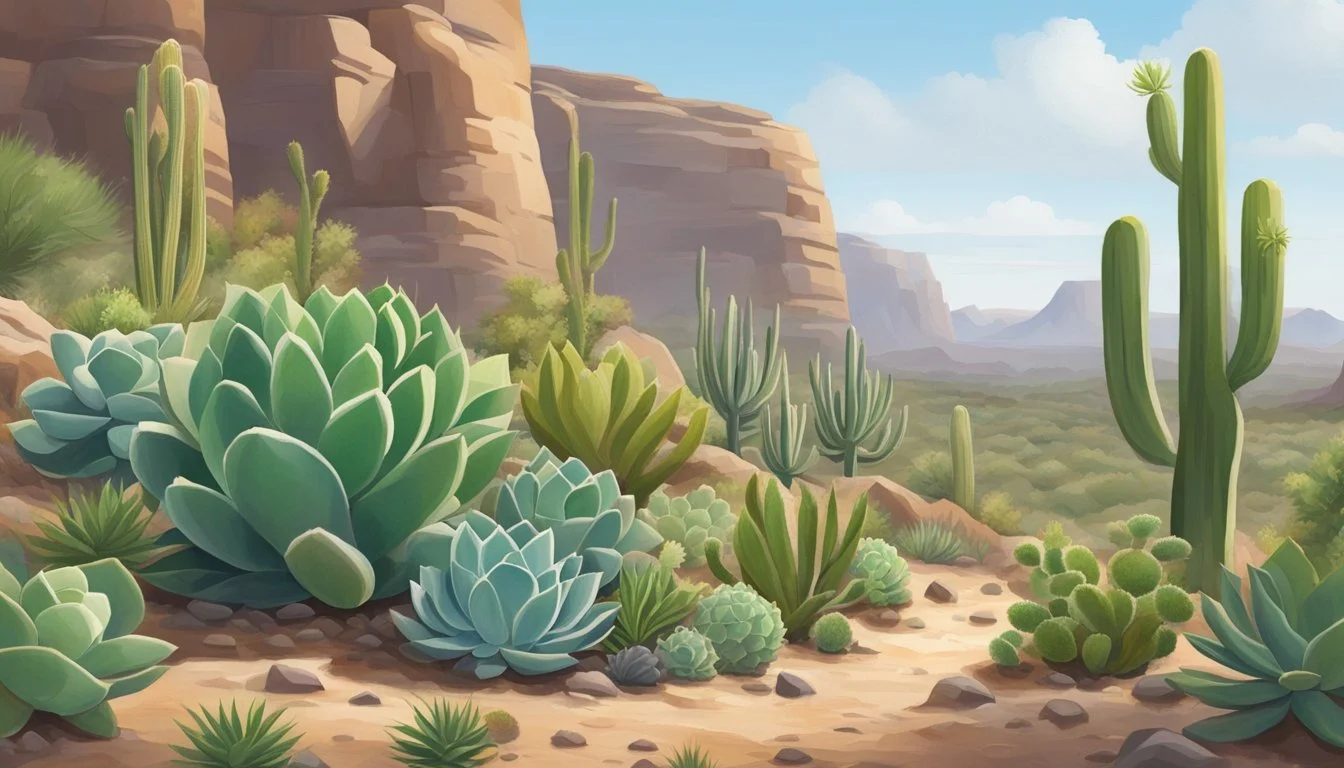Drought-Tolerant Plants in Alabama
Top Picks for Resilient Gardens
Alabama's diverse climate presents unique challenges for gardeners and landscapers, particularly during periods of low rainfall. To create lush, resilient landscapes capable of withstanding these challenging conditions, the introduction of drought-tolerant plants has become increasingly important. These resilient species are adept at conserving water, allowing them to thrive even when precipitation is scarce.
In selecting plants for Alabama gardens that can endure dry spells, it is critical to consider native species and those adapted to the region's specific environmental conditions. Many of these plants require less water and maintenance once established, making them an ideal choice for sustainable landscaping in Alabama. The benefits of such plants extend beyond water conservation, as they often provide necessary habitats for local wildlife and contribute to biodiversity.
Implementing a water-efficient landscape not only aligns with environmental stewardship but also results in lower utility costs and reduced labor for upkeep. With a well-planned selection of drought-tolerant plants, Alabama residents can enjoy verdant gardens that are both beautiful and robust against the heat and sporadic rainfall of the Southern climate.
Understanding Drought Tolerance
Drought tolerance refers to the ability of plants to withstand periods of low water availability. In Alabama, this quality is especially relevant given the state's varied climate conditions.
The Concept of Drought Tolerance
Drought-tolerant plants possess specific adaptations that enable survival during water scarcity. These can include deep root systems that tap into groundwater, leaves that reduce water loss, and the ability to store water within their structures. These traits are critical for maintaining plant health and productivity during times when water supply is limited. Climatic factors such as rainfall patterns and weather conditions heavily influence the need for drought tolerance in plant species.
Drought Tolerance in Alabama Conditions
In Alabama, with its range of USDA hardiness zones, drought-tolerant landscaping becomes an essential part of garden and agricultural design. It is not just about choosing the right plants but also understanding how they interact with Alabama's climate. The state experiences a variety of weather conditions, from longer summers with high temperatures to varying rainfall patterns. Therefore, landscaping with plants suited to survive in these conditions without demanding excessive irrigation is crucial for conserving water and ensuring plant viability.
Alabama's Native Flora
Alabama's rich tapestry of native flora plays a crucial role in supporting local ecosystems and biodiversity. These indigenous species have adapted over time to thrive in the state's unique climate and conditions.
The Importance of Native Plants in Alabama
Native plants are integral to the health and function of Alabama's ecosystems. They provide essential habitats for wildlife and contribute to the state's biodiversity. These species are well-adapted to the local climate, soil types, and other environmental factors, which allows them to support ecosystems without the need for excessive watering or fertilization.
Common Alabama Native Drought-Tolerant Plants
Alabama is home to a variety of native plants that are adept at tolerating periods of drought. These species are valuable for landscaping purposes due to their low maintenance requirements.
Black-eyed Susan (Rudbeckia hirta): With its striking yellow petals and dark brown centers, this perennial flourishes in full sun and well-drained soils.
Passionflower (Passiflora incarnata): Also known as the maypop, passionflower is a robust vine with intricate flowers and edible fruit, showcasing resilience in the face of dry conditions.
Gulf Coast Muhly Grass (Muhlenbergia capillaris): This ornamental grass is notable for its pinkish plumes and can serve as a striking addition to any drought-tolerant garden.
Many-Flowered Grass-Pink (Calopogon multiflorus): Requiring full sun and minimal water once established, this perennial adds unique beauty with its vibrant blooms.
By utilizing these and other drought-tolerant native species, gardeners and landscapers in Alabama can cultivate vibrant gardens that help sustain the local ecosystem while conserving water.
Selecting Drought-Tolerant Plants
When crafting a drought-resistant landscape in Alabama, the selection of appropriate plants is critical. These plants should exhibit a natural ability to thrive despite limited water availability, particularly during prolonged dry spells.
Assessing Plant Drought Tolerance
The resilience of drought-tolerant plants is not a singular trait but a result of various adaptations. Perennials, shrubs, and trees that are suited for Alabama’s climate often feature deep root systems which allow them to access moisture from deeper soil layers. Additionally, characteristics such as waxy or hairy leaves help in reducing water loss. When evaluating plants for drought tolerance, one should inspect these features and consider their overall water conservation mechanisms.
Plants Suited for Alabama's Climate
Alabama's climate supports a range of drought-tolerant plants tailored to withstand full sun and sporadic rainfall. This includes a variety of perennials, like the stonecrop, known for its resilient succulent foliage and wildflowers that add color without requiring excessive irrigation. For larger landscaping areas, certain trees and shrubs can provide both shade and visual interest. Moreover, ornamental grasses have become a popular choice for their hardiness and minimal water needs. It is also beneficial to integrate annuals that can weather dry conditions, as they contribute texture and vibrance to the garden throughout the growing season.
Planting and Care
Successful cultivation of drought-tolerant plants in Alabama begins with meticulous soil preparation and continues through strategic watering and ongoing maintenance. Optimal plant health and water efficiency are the goals of these practices.
Soil Preparation for Drought Resistance
For drought resistance, Alabama gardeners should focus on sandy soil enhancement. The addition of organic matter can significantly improve water retention and nutrient availability. To achieve this,
Incorporate compost or peat moss into the soil to increase its organic content.
Use soil conditioners that are specifically designed to minimize soil erosion and improve soil structure.
The use of mulch is also important, as it helps to:
Retain soil moisture
Regulate soil temperature
Prevent weed growth
A 2 to 3-inch layer around plants can make a substantial difference.
Watering and Maintenance
When caring for drought-tolerant plants, watering efficiently is key. Alabama's gardeners should:
Water plants during the early morning to reduce evaporation loss.
Consider drip irrigation systems, which deliver water directly to the roots and minimize waste.
Maintenance involves more than just watering. For continued health and drought resistance:
Fertilizing should be done sparingly and preferably with products suited to drought-tolerant species.
Low-maintenance plants should be selected for the garden to reduce the overall need for upkeep.
Plants like black-eyed Susan and purple coneflower not only require less care but also thrive in Alabama's conditions, as highlighted by Lawn Love.
Regular gardening practices, such as deadheading and pruning, can encourage plants to focus energy on survival and drought resistance, enhancing their adaptability to Alabama's climate.
Ecosystem Benefits
Incorporating drought-tolerant plants into Alabama's landscapes goes beyond saving water; it heaps significant benefits onto the local ecosystem by enhancing biodiversity and providing a refuge for wildlife.
Supporting Local Wildlife with Drought-Tolerant Plants
Drought-tolerant plants often reflect Alabama's natural heritage, offering critical habitats and food sources for local wildlife including birds and pollinators. These plants have evolved to flourish in the region's climate, enabling them to provide sustenance and shelters even under water-scarce conditions. For instance, plants like the Boxelder maple serve as a highly favored native species known to support a variety of birds that rely on its seeds, as detailed on Lawn Love.
Reducing Environmental Stress through Appropriate Plant Selection
Choosing the right drought-tolerant plants helps mitigate environmental stress by preserving the ecosystem's integrity and biodiversity. These plants are adept at reducing soil erosion and require fewer resources, such as fertilizers or pesticides, thereby lessening the overall environmental footprint. The Alabama Cooperative Extension emphasizes environmental benefits such as diminished soil erosion and improved air quality due to these plants' efficiency in removing pollutants while contributing oxygen to the atmosphere, which can be explored further in Drought-Tolerant Landscapes for Alabama.
Designing a Drought-Resistant Landscape
Crafting a drought-resistant landscape involves thoughtful planning and the selection of appropriate plants that thrive with minimal water. An effective design addresses both the aesthetic and practical aspects of gardening under water restrictions typically found in Alabama.
Creating a Water-Efficient Garden
Developing a water-efficient garden begins with soil preparation and choosing a layout that reduces water usage. One can employ a variety of techniques such as mulching and grouping plants with similar water needs together. Using soil amendments like compost can increase the soil's water retention abilities. Additionally, incorporating elements such as rain barrels to collect and recycle water furthers efficiency. For Alabama gardens, implementing drip irrigation systems that direct water to plant roots with minimal waste is a viable option discussed in Drought-Tolerant Landscapes for Alabama.
Incorporating Drought-Tolerant Plants into Home Landscaping
Integrating drought-tolerant plants into one's home landscaping begins with selecting species suited to Alabama's climate. Plants such as sedums, succulents, and native grasses can flourish in full sun to partial shade, requiring little water once established. The use of these low-maintenance plants not only conserves water but also creates a resilient and attractive garden. For personalized plant selection, the guide provided by Garden Design offers insights into various drought-tolerant options that cater to different gardening zones and sunlight availability, ensuring that each garden is both beautiful and water-wise.
Sustainable Gardening Practices
In the context of Alabama's climate, sustainable gardening centers on the effective use of resources, promoting soil health, and reducing the need for external inputs like water.
Organic Gardening with Drought-Tolerant Plants
Organic gardening practices enhance the biodiversity of a garden while reducing reliance on synthetic chemicals. Utilizing drought-tolerant plants capable of thriving in Alabama's heat reduces water use. Integrating organic matter such as compost into the soil improves water retention and supplies necessary nutrients, minimizing the need for synthetic fertilizers. Furthermore, applying mulch around plants not only conserves soil moisture but also suppresses weeds, which may otherwise necessitate the use of herbicides.
Compost: Adds nutrients and beneficial microorganisms.
Mulch: Maintains soil moisture and temperature, reduces weed growth.
Mitigating Soil and Water Preservation
The sustainable use and preservation of soil and water are critical in Alabama, especially considering potential drought conditions. Gardeners can implement soil preservation strategies by avoiding over-tilling, which maintains soil structure and prevents erosion. To safeguard water resources, gardeners can employ rainwater harvesting systems and drip irrigation, which deliver water directly to the plant roots, significantly reducing wastage. Limiting the use of pesticides and herbicides protects the integrity of both soil and water by reducing chemical runoff.
Rainwater Harvesting: Collects and stores water for garden use.
Drip Irrigation: Provides efficient water delivery directly to plant roots.
Promoting Plant Health
In Alabama, maintaining plant health involves conscientious care, wise use of fertilizers, and strategic pest and disease management. Robust growth can be achieved through the implementation of focused nurturing practices.
Protecting Plants from Pests and Diseases
To safeguard drought-tolerant plants from pests and diseases, gardeners should adopt an integrated pest management approach, utilizing both preventative measures and carefully selected pesticides. Regular monitoring helps detect issues early, and applying eco-friendly pesticides as needed can control outbreaks without excessive chemical use. Gardeners may also find that a well-timed application of herbicide can prevent weed competition, thereby reducing stress on desired plants.
Preventative Measures:
Inspection: Regularly check plants for signs of stress or infestation.
Selection: Choose disease-resistant varieties.
Pesticide Application:
Eco-friendly Options: Neem oil, insecticidal soaps.
Spot Treatment: Target affected areas to minimize overall pesticide use.
Nurturing Plant Growth
Proper nutrition plays a critical role in the growth of drought-tolerant plants in Alabama. A balanced use of fertilizers can create an optimal environment for plant health. Slow-release formulas are often recommended for their ability to provide consistent nutrients without overwhelming plants. Moreover, because drought-tolerant varieties are often low-maintenance, they usually require less frequent fertilization than other plants.
Fertilizer Application:
Slow-Release Fertilizers: Provide a steady supply of nutrients.
Correct Dosage: Follow manufacturer's guidelines to avoid over-fertilization.
Additional Growth Support:
Mulching: Helps retain soil moisture and regulate temperature.
Pruning: Encourages healthy growth and prevents resource wastage on unnecessary foliage.
Featured Drought-Tolerant Plant Profiles
This section provides an overview of select plant species known for their resilience to dry conditions in Alabama. These plants offer both aesthetic appeal and practical benefits in drought-prone landscapes.
Coral Honeysuckle (Lonicera sempervirens)
Coral honeysuckle, with its vibrant trumpet-shaped red flowers, attracts hummingbirds and is ideal for trellises. This climbing vine is an evergreen perennial in the warmer zones and sheds its leaves in colder regions of Alabama.
American Beautyberry (Callicarpa americana)
Famed for its clusters of eye-catching purple berries that emerge in late summer and persist into fall, American Beautyberry is a drought-tolerant shrub with arching branches. Its berries are often used to make jellies and appreciated by wildlife.
Oakleaf Hydrangea (Hydrangea quercifolia)
Oakleaf Hydrangea stands out with its distinctive shaped leaves that resemble those of an oak and its elongated clusters of white blooms that gradually turn purplish-pink as they age. This Alabama native is a sturdy choice for dry, shaded areas.
Southern Magnolia (Magnolia grandiflora)
Southern Magnolia, an iconic tree of the South, is admired for its large, fragrant white flowers and glossy, evergreen leaves. This stately tree provides year-round interest and can serve as a striking focal point in any landscape.
Plant Selection for Specific Alabama Regions
Selecting the appropriate plants for different areas in Alabama is crucial due to the state's varied climatic conditions, ranging from the coastal belts to the inland regions. Proper plant choice ensures sustainability, enhances local biodiversity, and reduces water consumption.
Choosing Plants for Southern Alabama
In Southern Alabama, gardeners and landscapers often opt for plants that can thrive in the region's warmth and humidity. For areas that receive full sun, the use of drought-tolerant species like the native blanket flower (Gaillardia pulchella) or the vibrant purple coneflower (Echinacea purpurea) is ideal. These plants are well-adapted to the local conditions and require minimal supplemental watering.
For spaces with partial to full shade, incorporating plants such as the Alabama azalea (Rhododendron alabamense) and the southern maidenhair fern (Adiantum capillus-veneris), which are both native to the area, can contribute to a water-wise and resilient garden. Here is an example of a palette for Southern Alabama gardens:
Full Sun: Blanket flower, Purple coneflower
Partial to Full Shade: Alabama azalea, Southern maidenhair fern
Adapting to Coastal and Inland Conditions
Selecting plants for coastal conditions in Alabama requires attention to salt tolerance and the ability to withstand strong winds. Sea oats (Uniola paniculata) and beach sunflower (Helianthus debilis) are excellent choices that stabilize dunes and contribute to the coastal ecosystem. Conversely, inland areas may support a wider variety of species due to a lack of saline influences.
When designing for coastal landscapes, consider these two aspects:
Salt Tolerance: Plants must be able to cope with saline spray or soil.
Wind Resistance: Hardy shrubs and grasses which are adapted to persistent breezes.
In both coastal and inland settings, the integration of drought-tolerant landscapes is crucial given the occasional dry spells that can hit the region. Utilizing native plants not only supports local ecosystems but also reduces maintenance needs and conserves water resources.
Seasonal Considerations
When cultivating drought-tolerant plants in Alabama, gardeners must give due attention to the climatic requirements during the fall season and account for the variability that comes with mild winters. Specific strategies during these periods can ensure the hardiness and resilience of the landscape.
Preparing for the Fall Season
Fall is a critical time for establishing drought-tolerant plants in Alabama. As temperatures cool and days shorten, plants require adequate time to establish roots. Gardeners should:
Water new plantings deeply to encourage root growth but gradually reduce frequency to acclimatize them to less water.
Mulch around plants to preserve soil moisture and protect roots from temperature fluctuations.
Addressing Variability in Mild Winters
Alabama's winters can be unpredictable, ranging from mild to occasionally harsh conditions. During these mild winters, it's essential to:
Monitor soil moisture levels, as winter drought can occur during extended periods without rain.
Protect plants from cold snaps by providing temporary cover, especially for recently planted or sensitive varieties.
Combating Invasive Species
Drought-tolerant landscapes in Alabama face threats from invasive species that jeopardize native biodiversity and ecosystem health. Effective strategies are critical for protecting native species and maintaining ecological balance.
Identification and Management of Invasive Species
The first step in combating invasive species is accurate identification. This is crucial for distinguishing between benign non-native plants and those that pose a significant threat to Alabama’s ecosystems. For example, cogongrass is an invasive species that has infested over three-quarters of Alabama's counties, disrupting local habitats.
Once identified, a thorough management plan must be enacted. This involves a combination of mechanical, chemical, and biological control methods tailored to each species. Physical removal or cutting may be suitable for some invasive plants, while others require targeted herbicide applications. Biological controls, such as the introduction of natural predators, should be used judiciously to prevent further imbalances.
Long-term management also includes public education on the importance of planting native or non-invasive plants to support local ecosystems and biodiversity. Gardeners and landscapers are encouraged to avoid invasive species and opt for alternatives that are adapted to Alabama’s environment, thus reducing the chance of future invasions.
By emphasizing the identification and sustainable management of invasive species, Alabama can safeguard its native flora and fauna, thus preserving the delicate balance of its ecosystems for future generations.
Educational Resources
Educational resources are essential for those interested in understanding and implementing drought-tolerant landscaping in Alabama. They provide valuable knowledge about local ecosystems and practical guidelines for gardening with water conservation in mind.
Learning at the Birmingham Botanical Gardens
The Birmingham Botanical Gardens serves as a rich educational resource for individuals looking to expand their knowledge on drought-tolerant plants. It offers a variety of programs focused on sustainable gardening practices that cater to the unique climate of Alabama. Visitors can learn about native plant species that are well-adapted to the local ecosystem, reducing the need for irrigation and upkeep.
Educational Offerings:
Workshops and classes: The Gardens host workshops conducted by horticultural experts who specialize in drought-resistant flora.
Guided tours: They provide guided tours that point out species which thrive in Alabama's climate, demonstrating successful drought-tolerant gardening strategies.
By participating in these educational activities, gardeners can increase their proficiency in creating landscapes that are both beautiful and water-efficient.
Conservation Efforts
In Alabama, conservation efforts prioritize the establishment of drought-tolerant landscapes and the preservation of endangered plant species to protect the state's natural heritage.
Promoting Drought Tolerance for Future Generations
The cultivation of drought-tolerant landscapes is not only a practical response to changing climate conditions but also a forward-thinking strategy to conserve water resources. Educational initiatives by entities such as the Alabama Cooperative Extension provide citizens and local agencies with the knowledge needed to plant and maintain such landscapes. They emphasize the selection of native species that have adapted to Alabama's climate, thereby reducing the need for irrigation and preserving the state's natural resources for future generations.
Endangered Plant Species Preservation
To safeguard Alabama's unique natural heritage, conservation programs have been developed to protect and recover the state's endangered plant species. Efforts include habitat restoration, legal protection, and public education to raise awareness of these imperiled plants. Organizational initiatives like those by the Natural Resources Conservation Service extend technical and financial assistance, which are crucial for the implementation of conservation practices combating the adverse effects of drought and promoting biodiversity.
Summary
In Alabama's often challenging climate, characterized by periods of drought, drought-tolerant landscaping has become a practical approach for gardeners and homeowners. Utilizing plants that can withstand prolonged dry conditions not only conserves precious water resources but also ensures a resilient and vibrant landscape. Key considerations include selecting suitable plants and understanding their needs.
Plants Selection
The selection of drought-tolerant plants suitable for Alabama encompasses a variety of species that thrive with minimal water once established. These plants typically possess characteristics such as deep root systems and leaves designed to conserve water.
Ground Cover: Sedums and hardy ice plants serve well as groundcovers, offering extensive coverage and reducing soil erosion.
Perennials: Sun-loving perennials like black-eyed Susans and purple coneflower add a splash of color to the garden.
Shrubs and Trees: Drought-resistant trees such as the crepe myrtle or shrubs like junipers can provide structure and shade.
Water-Efficient Landscaping
Creating a drought-tolerant landscape in Alabama involves more than plant choice; it encompasses thoughtful planning and soil preparation. By improving the soil with organic matter and applying mulch, gardeners can greatly enhance moisture retention and minimize the need for supplemental watering. Furthermore, grouping plants according to their watering needs optimizes irrigation efforts — a method known as "hydrozoning."
For those interested in accentuating their garden with native species, Alabama offers an array of wildflowers and native plants that naturally adapt to local conditions, thereby supporting the state's biodiversity and local ecosystems.
The thoughtful application of drought-tolerant principles ensures gardens are sustainable, resilient, and beautiful throughout the warmer seasons, even when rainfall is scarce.
Frequently Asked Questions
In this section, key insights are provided on selecting plants well-suited to the hot, often arid conditions of Alabama. From perennials to shrubs, the focus is on species that maintain resilience during drought periods, ensuring a flourishing garden even in challenging climates.
What are some low maintenance, drought-tolerant perennials that thrive in Alabama?
Perennials such as purple coneflower and sedum are excellent choices for Alabama gardens due to their ability to endure dry spells with minimal care.
Can you list native Alabama shrubs that are resistant to drought?
Native shrubs like the Alabama azalea and oak-leaf hydrangea are well-adapted to the local climate and can resist drought conditions, retaining their vigor without needing frequent watering.
What flowering plants that can withstand drought are suitable for Alabama's summer climate?
Flowering plants such as Gaillardia (Blanket Flower) and Lantana are notable for their vibrant colors and ability to thrive in Alabama's intense summer heat without requiring excessive watering.
Which evergreen plants are both drought-resistant and suitable for landscaping in Alabama?
Evergreen choices for Alabama landscapes include the Southern wax myrtle and the Eastern red cedar, both of which offer year-round greenery and are resistant to drought once established.
What are the best full-sun plants for Alabama gardens that require minimal watering?
Full-sun plants that perform well in Alabama's sun-drenched gardens with little water include yarrow, salvia, and daylilies, all known for their drought tolerance.
How do I choose drought-tolerant plants for a heat-intensive zone 9 garden?
When selecting plants for a zone 9 garden, consider species' heat tolerance and water requirements. Reference guides such as the Alabama Cooperative Extension's drought resources can provide specific recommendations for drought-tolerant plants suitable for this zone.


